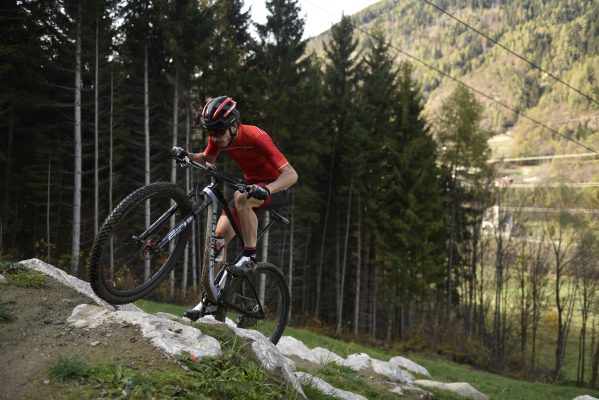Power meters are no longer just for pro athletes – but how can training with a power meter be beneficial to mountain bikers?
Until pretty recently, training or riding with power has been something reserved for elite racers, or for indoor training alongside the rise in popularity of smart turbo trainers. Nowadays, however, more and more riders are discovering the advantages of accessing power data using the latest generation of power meter pedals, such as Favero’s Assioma PRO MX.
Not only are they easy to swap between bikes, but they can be more affordable, are easy to set-up, and can enhance your riding by providing real-time information on your effort.

Training with power is a super helpful metric for those who want to track their fitness
What are the advantages of a power meter for mountain biking?
Getting stronger on the bike isn’t just about riding when you want and how you want. As a beginner, of course riding more will see you improve, but eventually you’ll reach a plateau in your fitness and skill level. That’s where structured training comes in, and the best way to make your training sessions count is by controlling your power output.
Unlike heart rate, power is a consistent metric. It’s not affected by things such as illness or other external factors, and it acts as a great way to measure your fitness and performance over time. Since measuring your effort is made even harder off-road, as this is partly dictated by the terrain, using a power meter lets you aim to ride within your comfort zone for longer, or know when you can really push. So what options are there for mountain bikers who want to try riding with power?

Each pedal only weighs 191.4g, making it the lightest power pedal on the market
The options
The most popular types of power meters are either crank or pedal-based. For those with multiple bikes, pedal-based power meters are generally better as you can swap them around easily. Additionally, pedals like the Assioma PRO MX use Shimano compatible cleats – so if you already ride clipped-in with an SPD system, you can get started without swapping cleats. Result!
Favero’s Assioma PRO MX power pedals
So what’s special abou Favero’s new off-road specific power pedals? Firstly, Favero packs all the electronic tech into the stainless steel axle, unlike other power meters which use alternative structures that aren’t always as weatherproof. This includes things like the batteries (which are rechargeable), the electronic components and the strain gauges. Keeping them all protected from water and dirt ingress prevents drop outs in power readings.
One thing XC or gravel riders may worry about when it comes to their fancy pedals is shocks and damage from rough terrain. Favero’s pedal spindle is constructed from stainless steel, and the body from aluminium. With these, you’ve got a pretty tough shell – in fact it’s the strongest material available without compromising on light weight performance. They’re actually the lightest power meter pedal on the market at only 191.4g per pedal.
The fact the body doesn’t contain any of the ‘valuable’ elements inside also means it’s easily replaced. Favero actually offers a pedal body replacement service for around €60, which helps increase the overall lifespan of its power meter pedals.

You can get more than just power data from the Assioma PRO MX pedals – they share things like cadence, rider position, TE, PS and PCO
But what about the data?
The PRO MX pedals aren’t just about transmitting information about your watts and calling it a day – they also share cadence information, as well as more advanced metrics such as power phase, rider position, TE (torque effectiveness), PS (pedal smoothness), and PCO (platform centre offset). And if you have the dual-sided version, then your left/right balance – this can be super helpful information if you’re coming back from injury or perhaps you’re just curious about your ride ergonomics – how much relative work each leg is contributing.
This data is backed by the Instantaneous Angular Velocity-based Power calculation (IAV power system), which basically means it calculates your power based on real instantaneous angular velocity. If that’s too much jargon, essentially it guarantees overall accuracy to ±1%.

There are two models – dual sided and single-sided. This refers to whether or not the power data is captured on one pedal or both.
How do you use the pedals?
The Assioma PRO MX pedals are super easy to set up. Simply charge them, install to your bike, and pair them to your cycling computer before performing a calibration. Then, they’re ready to go! They can be paired via Bluetooth or through ANT+, and if you use the latter then you can also view things like IAV Cycling Dynamics (if you use a Garmin computer) which includes power phase, rider position information and PCO.
For many price-conscious riders, the Assioma PRO MX pedals will be more than an attractive proposition. Power meters can cost upwards of £1,000 these days, but Favero has managed to keep the pedals at a more affordable price point of £399 for the MX-1 single-sided, and £599 for the MX-2 dual-sided model.
The Favero Assioma PRO MX pedals are available to buy directly on the Favero website.




